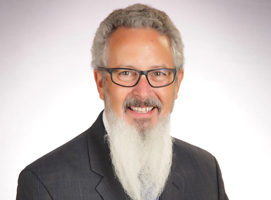enrollment
Raising completion and graduation rates: 2 clues for action beyond the first year
 Our latest research studies on second-year college students have me thinking about how important it is for those of us involved with student success and retention to be working on programs that focus beyond the first year of college. Don’t misunderstand me: I appreciate how important the first year is, and I am glad we have so many resources to help us build first-year programs. It’s just that our ultimate goal should really be completion. Job one should be doing everything we can to help the students who enroll at our institutions to complete whatever their educational goal may be.
Our latest research studies on second-year college students have me thinking about how important it is for those of us involved with student success and retention to be working on programs that focus beyond the first year of college. Don’t misunderstand me: I appreciate how important the first year is, and I am glad we have so many resources to help us build first-year programs. It’s just that our ultimate goal should really be completion. Job one should be doing everything we can to help the students who enroll at our institutions to complete whatever their educational goal may be.
The good news is there’s a growing body of research and resources for us to help students beyond the first year. At Noel-Levitz we’ve just released the results of a national pilot study, The Attitudes of Second-Year College Students. I won’t repeat what’s in the report here, but I do want to mention a couple of things that really struck me.
What I noticed in the data
First some really good news: Across institutional types (two-year and four-year, public and private), second-year students in fall 2010 reported high levels of academic and social motivation. Consistent with these findings, most second-year students were satisfied with their overall experience (5.71 on a 7-point scale).
Where students seem to be struggling most was with the financial dimension of attending college. Only 50.6 percent of respondents said, “I have the financial resources that I need to finish college.” Only 47.5 percent said, “I don’t have any financial problems that will interfere with my studies.” Clearly, if we are going to help students complete their educational goals, we are going to have to continue to work with them to finance their education and to find work opportunities that will complement their studies.
Second-year students’ receptivity to support was encouraging. On only one item did their receptivity to support decrease from their first to their second year: “Would like to receive help this year to select an academic program or major.” That’s good news: 17.5 percent fewer students wanted help selecting a major in their second year than wanted such help in their first year. Underneath that finding, though, is the reality that, overall, 36.1 percent of second-year students still do want help selecting an academic program or major.
Retention, term-to-term persistence, and two clues for action
It is a simple matter for students who are unsure where they are headed academically to step out of school when financial concerns get in the way. Noel-Levitz’ 2011 Mid-Year Retention Indicators Report illustrates the extent of the problem: The median term-to-term persistence rate for second-year students returning for the second semester of their second year at two-year institutions is only 85.7 percent, while the median retention rate for second-year students returning for year three at four-year institutions is between 83 and 84 percent. (On the good side, the retention figure is almost 10 percent higher than between year one and year two for four-year institutions , but still, at the median, 16 to 17 percent of second-year students at four-year institutions are not returning for their junior year.)
So, how can we keep more students on track to their educational goals? There are clues in these studies. First, we must continue to deliver quality advising in students’ second year of college. Across institutional types, over half of surveyed second-year students said they would like to receive help to “prepare a written academic plan for graduation.” That would suggest that many students already have a completion mindset which is almost certainly behind their strong motivation and receptivity. So our action step is to work with our second-year students to build, in writing, plans that show them how they can complete the curriculum in a timely fashion. Students want to know that they can complete their educational goals. It behooves us to show them how they can do it.
The second clue to action is in the item with the biggest jump in receptivity: 46 percent more second-year students than first-year students were receptive to help to “identify work experiences or internships related to my major.” In that single item, the desire to prepare for a career and the need to earn the money to do it come together. We must work with the corresponding offices on our campus to support career planning, help with job placement, and facilitate early internships planning. Is your campus supporting these student needs during the second year?
Where to from here?
Raising completion and graduation rates is a big task, but it is much more manageable when we break it down into pieces. These research studies on second-year students help point the way. As many of us know from experience, students will respond when we focus on academic planning (which includes ensuring course availability), job placement, and internship planning, all while helping them find the right payment plan to keep their financial pressures at bay.
Interested in discussing these findings or strategies for increasing completion rates? Please contact me by e-mail or by calling 1-800-876-1117.
